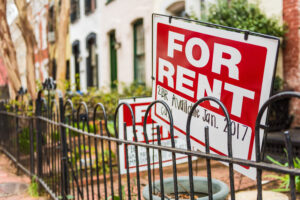No matter what time of the year it is, there’s always the possibility of mold. Unfortunately, mold doesn’t usually only grow in one place. As long as there is moisture around your rental property, you’ll always have to be on the lookout. While you’ve probably seen all kinds of mold as a landlord, it’s important to know how to diagnose and prevent it before it gets out of hand.
Diagnosing the Contaminated Areas
While the legal requirements for mold vary state by state, dealing with the contamination should be your priority regardless. If the mold grew from a broken pipe or is developing in the walls, you’ll benefit from diagnosing and dealing with the hazard yourself, preventing further (costly) damages. Make sure to look up your local and state-wide legislation on mold. For example, in California, visible mold in a dwelling is considered a substandard housing condition and a citation can be issued against you if you do not address the problem (SB 251).
When you discover mold on your property, you’re going to want to:
- Ascertain how the mold developed
While in some cases mold will appear because of humid weather, others are developed in different ways. Make sure there are no leaks in the plumbing, that heating and air conditioning units are unobstructed, and that any in-unit dryers’ vents are positioned properly. If you discover mold in your property’s bathroom, you might want to make sure the bathroom vent is working properly.
- Determine at what level the contamination is
You already know that some mold is toxic and some mold is relatively harmless. The problem is, discerning at what level of toxicity the mold is at. While mold comes in a wide variety of colors, as a general rule, black mold is extremely toxic. If your tenants have noticed health problems since the mold, then it’s most likely toxic. To help you determine whether the mold is too toxic to clean yourself, you can hire a certified mold tester or use an at-home
mold testing kit like this one.
Removing the Mold
If the mold isn’t toxic, then you can easily remove it yourself. To clean it, the Michigan Department of Community Health has posted a handy directional guide. Their mold cleaning checklist includes:
- Long rubber dishwashing gloves
- Goggles
- N-95 mask
- A measuring cup
- 2 one-gallon buckets
- 2 sponges or rags
- Water
- Household bleach
If the mold requires a professional, you’re going to want to research a few mold remediation services. Before hiring, make sure their company and employees are certified in mold removal and that they perform employment screening, to protect your tenants if they’re onsite. You should also be aware of what chemicals they will be using during the process. Be aware that if the mold is bad enough to where you need a professional, you might be required by your state’s law to pay for your tenant to stay in a hotel during this time.
Preventing Mold Outbreaks in the Future
After going through all that, the last thing you want is another mold outbreak. Now that the mold is long gone, you’re going to want to create a follow-up plan with your tenant. Make it a priority to check the places that had the mold (or needed repairs) and often check places on your property that might develop mold (humid areas). This allows you to make sure that the same issues don’t happen again, saving you a potential expense down the line.
As disgusting as mold is, as a landlord, it’s one of the few things you’re going to have to deal with on a yearly basis. Rather than avoiding it, take mold head on by diagnosing the contaminated area, removing the mold safely, and by taking measures to prevent mold breakouts in the future. While it’s impossible to remove mold from your rental forever, you can make the odds in your favor.
How do you typically handle mold outbreaks? Are there particular areas on your property that are more prone to mold than others?
Let us know your experience in the comments section below and be sure to subscribe!







